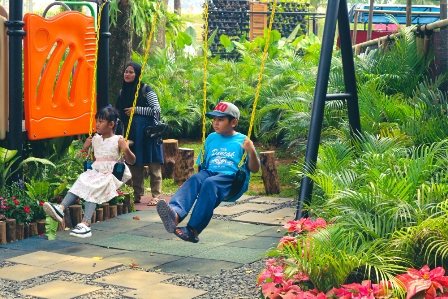In today’s fast-paced world, the need for relaxing and recreational spaces is more pronounced than ever. Outdoor spaces, particularly gardens, serve as havens for individuals seeking a break from the daily grind. In this article, we’ll delve into the art of designing a playful garden that not only embraces nature but also caters to various recreational needs.
Understanding User Needs
To create a truly engaging outdoor space, it’s crucial to understand the diverse needs and preferences of the users. This involves analyzing what activities individuals enjoy and tailoring the garden’s design to accommodate these preferences. Whether it’s a cozy reading nook, a space for family gatherings, or an area for active play, incorporating diverse elements ensures a garden that resonates with its users.
Planning the Layout
An effective layout is the backbone of any well-designed garden. Zoning the space for different activities helps maintain a sense of order while providing a variety of experiences. Balancing aesthetics with functionality is key, ensuring that the garden not only looks appealing but also serves its purpose seamlessly.
Essential Garden Features
Versatile seating arrangements, interactive water elements, and play areas suitable for all ages are essential components of a playful garden. These features contribute to the overall recreational atmosphere, making the outdoor space inviting for individuals of all ages and interests.
Integrating Greenery
Selecting the right plants is crucial for creating a harmonious and visually appealing landscape. Understanding the climate, soil conditions, and maintenance requirements helps in choosing greenery that thrives, enhancing the overall beauty of the garden.
Lighting for Ambiance
Proper lighting transforms a garden, extending its usability into the evening. Beyond functionality, creative lighting solutions add a touch of magic to the space, creating an ambiance that encourages relaxation and enjoyment.
Sustainable Practices
Incorporating eco-friendly materials and energy-efficient design choices not only align with environmental consciousness but also contribute to the longevity of the garden. Sustainable practices ensure that the outdoor space remains vibrant and healthy for years to come.
DIY Garden Projects
For those on a budget or looking to infuse a personal touch, various do-it-yourself (DIY) projects can elevate the garden’s aesthetic. From handmade garden furniture to personalized decorations, these projects add a unique flair to the outdoor space.
Seasonal Adaptations
A well-designed garden should be enjoyable year-round. Implementing weather-resistant features and adapting the garden to different seasons ensures that it remains a source of joy, no matter the time of year.
Promoting Physical Activity
For individuals looking to incorporate health and wellness into their outdoor experience, designing the garden to promote physical activity is essential. This can include features like exercise equipment, walking paths, or spaces for active play.
Enhancing Social Spaces
Gardens are not just for solitude; they can also serve as gathering spaces for social interaction. Designating areas for group activities or events encourages a sense of community within the outdoor space.
Safety Measures
Ensuring the safety of users, especially in gardens frequented by families with children, is paramount. Implementing childproofing measures and overall safety precautions contribute to a worry-free recreational experience.
Technological Integration
Balancing technology with nature is a modern challenge in garden design. Smart solutions, such as automated watering systems or ambient soundscapes, can enhance the overall experience without detracting from the natural beauty of the garden.
Measuring Success
Gathering user feedback and adapting the garden’s design based on experience is a continuous process. This iterative approach ensures that the outdoor space remains relevant and enjoyable for its users.
FAQs
Exploring DIY projects is a cost-effective way to add a personal touch to your garden without breaking the bank.
Low-maintenance plants like succulents, lavender, and ornamental grasses can thrive with minimal care.
Yes, ensuring secure fencing, soft ground surfaces, and avoiding toxic plants are essential safety measures for gardens frequented by children.
Yes, integrating smart solutions like automated watering systems or ambient lighting can enhance your garden experience while maintaining its natural beauty.
Conduct surveys, observe user behavior, and encourage open communication with visitors to gather valuable feedback for improving your garden design.
Conclusion
Designing a playful garden is a creative endeavor that combines aesthetics, functionality, and the diverse needs of its users. Whether it’s creating a serene retreat or a vibrant social hub, a well-designed garden has the power to enhance the quality of life for those who engage with it. By carefully considering the outlined elements, individuals can transform their outdoor spaces into havens of recreation and joy.


